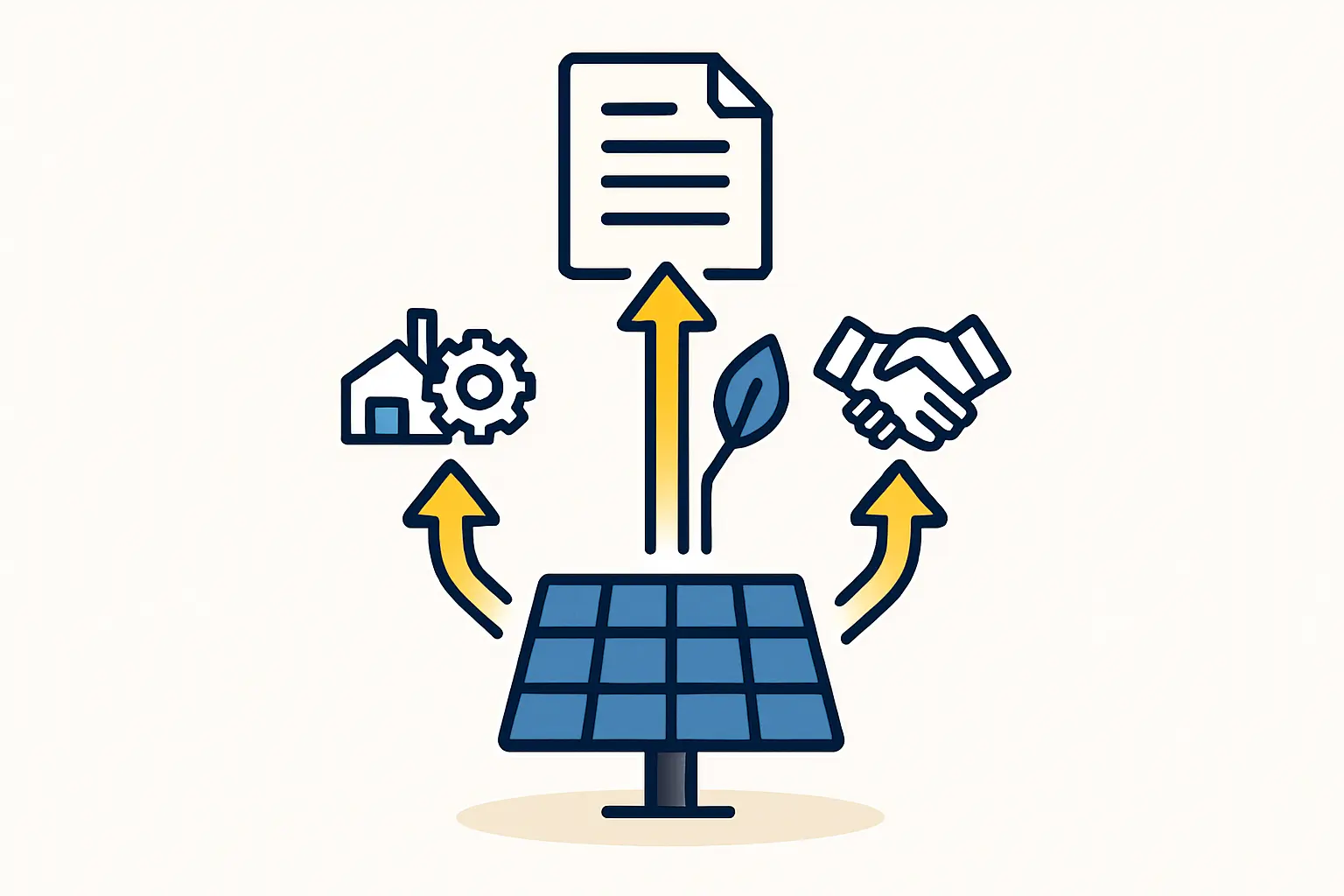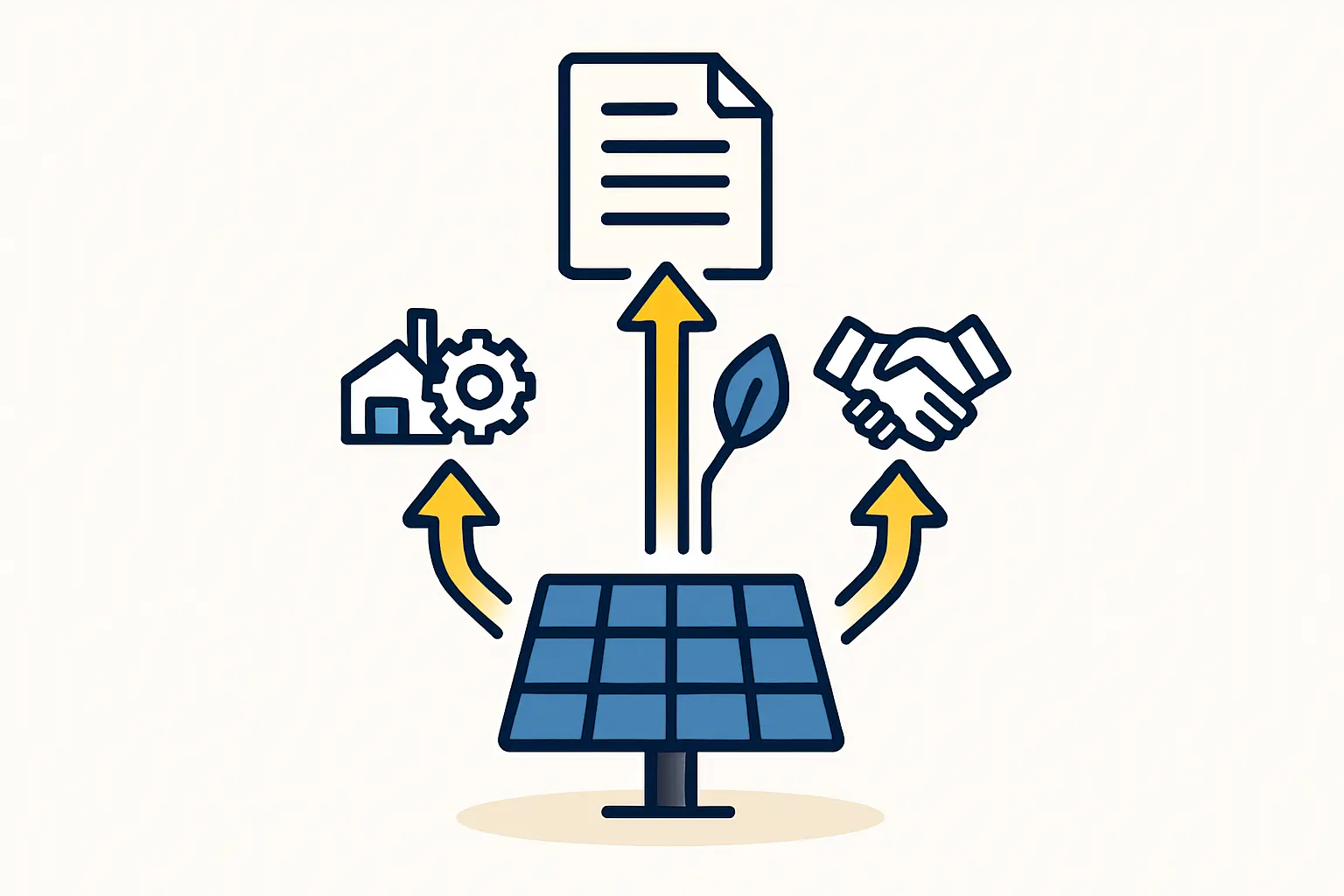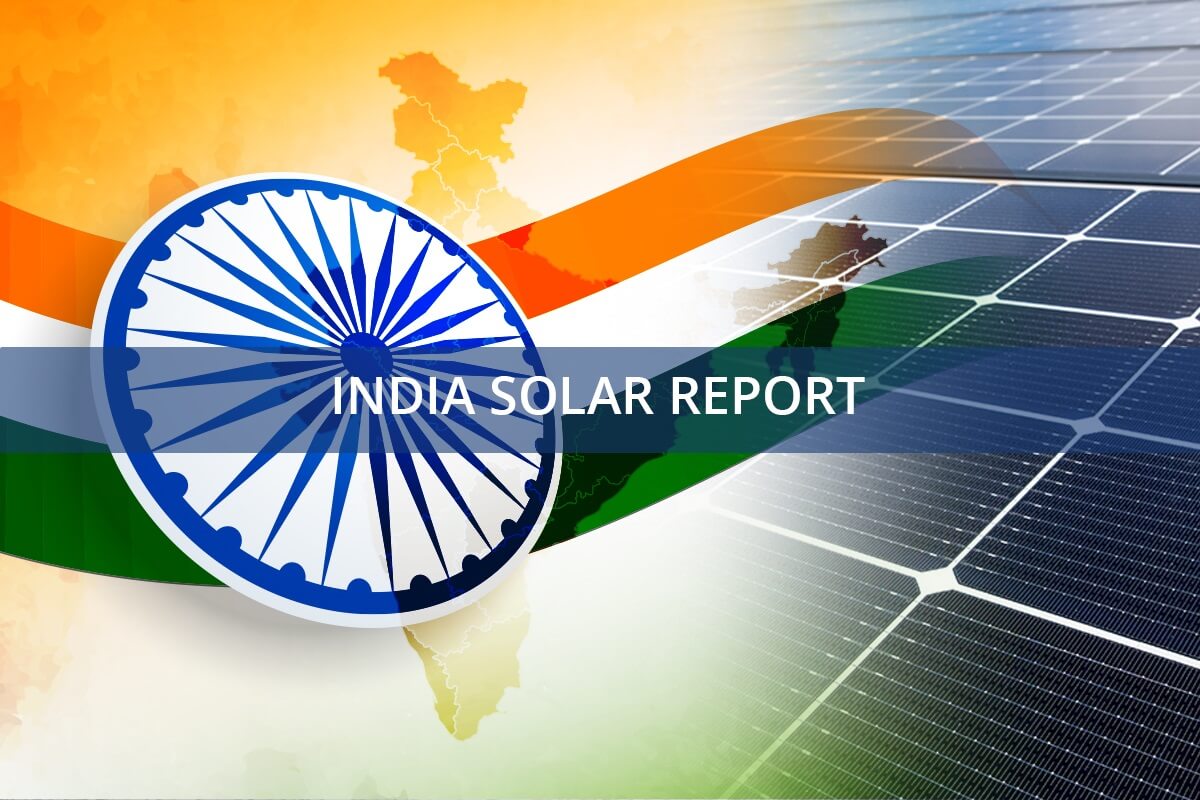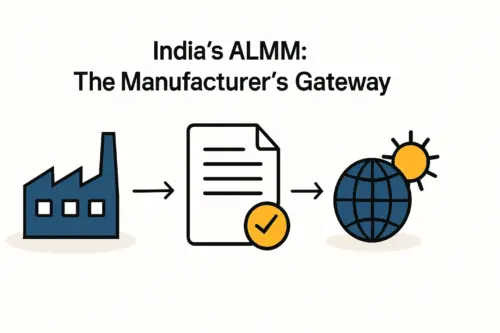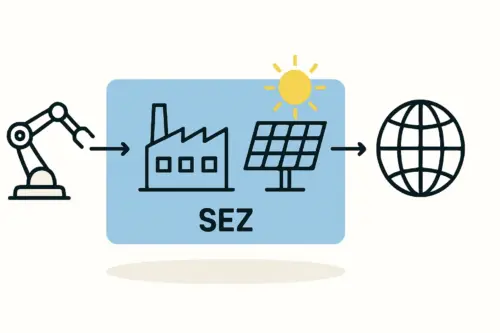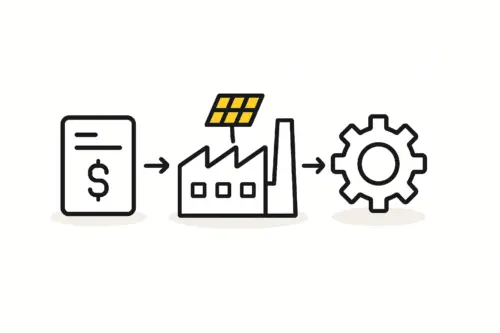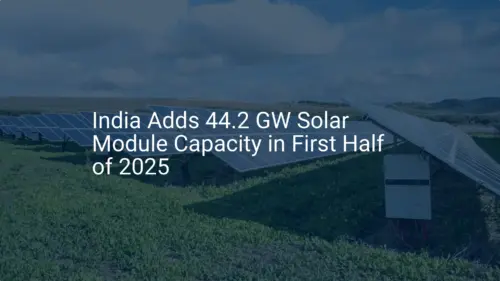For an entrepreneur establishing a new solar factory in India, the moment a container of high-precision manufacturing equipment is dispatched from a port in Germany or China marks a major milestone. Yet, between the vessel’s departure and the machinery’s arrival at the factory site lies a complex, often underestimated phase: customs clearance. An error in calculating the final landed cost at this stage can inflate project budgets by as much as 20-30%, turning a carefully planned investment into a financial challenge.
This guide offers business professionals a clear path through India’s import duty and customs framework for capital equipment—an essential step for accurate financial forecasting and keeping projects on schedule.
Understanding the Key Components of Import Duty in India
The term ‘import duty’ is not a single charge but a combination of several taxes and surcharges levied by the Indian government. For capital goods, such as a solar module laminator or stringer machine, the primary components are as follows.
Basic Customs Duty (BCD)
This is the fundamental duty levied on the assessable value of the imported goods. For most capital goods required for solar manufacturing, the BCD rate typically stands at 7.5%. However, this rate is subject to change based on government policy and the specific classification of the equipment.
Social Welfare Surcharge (SWS)
The SWS is levied on the Basic Customs Duty amount at a standard rate of 10%. This surcharge is intended to fund social welfare programs.
Integrated Goods and Services Tax (IGST)
IGST is a significant part of the total tax liability. It is levied on the total value of the goods plus the sum of all customs duties (Assessable Value + BCD + SWS). The standard rate for most machinery is 18%. Crucially for business planning, the IGST paid on imports can typically be claimed as an Input Tax Credit (ITC) by the importing entity, provided it is registered under the GST framework. This credit can then be used to offset future GST liabilities on domestic sales.
Example Calculation:
Consider a machine with an assessable value (Cost, Insurance, and Freight) of €100,000 (approx. ₹9,000,000).
- Assessable Value: ₹9,000,000
- Basic Customs Duty (BCD) @ 7.5%: ₹675,000
- Social Welfare Surcharge (SWS) @ 10% of BCD: ₹67,500
- Value for IGST Calculation: ₹9,000,000 + ₹675,000 + ₹67,500 = ₹9,742,500
- IGST @ 18%: ₹1,753,650
- Total Duties & Taxes: ₹675,000 + ₹67,500 + ₹1,753,650 = ₹2,496,150
The total landed cost, before local logistics, would be approximately ₹11,496,150. The IGST portion (₹1,753,650) is potentially reclaimable.
The Critical Role of HS Codes in Customs Classification
Every product traded internationally is classified under a Harmonized System (HS) Code. This multi-digit code is a global standard that determines the applicable duty rates and regulations for a specific item. Selecting the correct HS Code for specialized solar manufacturing equipment is arguably the most critical step in the import process.
An incorrect classification can lead to significant disputes with customs authorities, resulting in penalties, delays, and a potential re-assessment of duties at a much higher rate. For instance, classifying a sophisticated cell tester under a generic electronics code instead of its specific machinery code could trigger an entirely different duty structure. To avoid these issues, it is essential to work with both the equipment supplier and a local customs expert to confirm the correct HS Codes for all machinery long before the equipment is shipped.
Ready to make big Profits?
The solar Industry is Booming
WE HELP NEWCOMERS to the solar industry start their own solar module production line. Customers can make BIG PROFITS by selling modules and finding investors, without wasting money and time on things they don't need!
The Step-by-Step Customs Clearance Process
While intricate, the customs clearance process in India follows a structured, logical sequence.
Step 1: Pre-Arrival Documentation
Accuracy is paramount; a complete and correct set of documents must be prepared before the goods arrive at the Indian port. These typically include:
- Commercial Invoice: Detailing the buyer, seller, goods description, and value.
- Packing List: An itemized list of the contents of each crate or container.
- Bill of Lading or Air Waybill: The transport document issued by the carrier.
- Certificate of Origin: To verify the country where the goods were manufactured.
- Technical Specifications & Catalogues: To help customs officials verify the nature of the machinery.
Step 2: Engaging a Customs House Agent (CHA)
A Customs House Agent is a licensed professional who acts as the importer’s representative before the customs authorities. Engaging a reputable CHA is not optional; it is essential. This local expert will handle the filing of documents, respond to queries, and navigate the complexities of the customs system. This is a foundational step in learning how to start a solar factory and building the right local operational team.
Step 3: Filing the Bill of Entry (BoE)
The CHA uses the shipping documents to file a Bill of Entry with the customs department. This legal document formally declares the imported goods, their value, and the self-assessed duties.
Step 4: Assessment and Examination
A customs officer assesses the Bill of Entry. The department’s risk management system may flag the shipment for physical examination to verify that the goods match the declaration. This is a standard procedure but can add time to the clearance process.
Step 5: Duty Payment and Release
Once the assessment is complete and accepted, the importer must pay the calculated duties. Upon confirmation of payment, customs issues an ‘out of charge’ order, officially releasing the goods for collection from the port or warehouse.
Common Challenges and How to Mitigate Them
Based on our experience with numerous J.v.G. turnkey projects, certain challenges frequently arise, but proactive planning can mitigate their impact.
Challenge 1: Valuation Disputes
Indian customs authorities may challenge the declared value of the goods if they believe it is understated.
Mitigation: Maintain transparent and detailed records of the transaction, including bank transfer receipts and supplier contracts. Be prepared to justify the price paid.
Challenge 2: Documentation Errors
A simple clerical error, such as a mismatch between the number of packages on the invoice and the packing list, can halt the entire process.
Mitigation: Implement a strict pre-shipment document verification process with the equipment supplier. Ensure all details are consistent across every document.
Challenge 3: Port Congestion and Delays
Unexpected delays at the port due to congestion, holidays, or system issues can disrupt project timelines.
Mitigation: Factor a buffer of at least two to three weeks into the project schedule for customs clearance, as delays at this stage directly affect the timeline for the entire solar panel manufacturing process.
Potential Concessions and Schemes for Capital Goods
The Indian government periodically offers schemes that can reduce the duty burden on capital goods. For example, the Export Promotion Capital Goods (EPCG) scheme allows for the import of capital goods at a reduced or zero rate of customs duty, provided the importer fulfills specific export obligations over a set period.
These schemes come with complex compliance and reporting requirements. They are best suited for businesses with a clear, long-term export strategy and should be evaluated with the help of specialized financial and legal consultants.
Frequently Asked Questions (FAQ)
How long does customs clearance typically take in India?
If all documentation is in order and no examination is required, the process can take 7-10 working days. However, if there are queries or a physical inspection, it can extend to three or four weeks.
Can I pay import duties in a foreign currency?
No, all customs duties and taxes must be paid in Indian Rupees (INR) through authorized banking channels.
What is the difference between CIF and FOB value for customs?
FOB (Free on Board) is the value of the goods at the port of export. CIF (Cost, Insurance, and Freight) includes the cost of the goods, insurance, and freight charges to bring them to the destination port. Indian customs calculates duty on the CIF value.
Is it possible to get an advance ruling on the HS code?
Yes, India’s customs framework provides for an ‘Authority for Advance Rulings’. An importer can apply for a legally binding ruling on the classification of goods before import to gain certainty on the applicable duty rates. This is a formal and time-consuming process but can be valuable for high-value shipments.
Planning for a Smooth Import Process
Importing solar manufacturing equipment into India, while complex, is a manageable process when approached with diligence and foresight. The keys to success are ensuring absolute accuracy in all documentation, correctly classifying all equipment under the appropriate HS Codes, and partnering with an experienced and reliable Customs House Agent.
By treating customs clearance as an integral part of project planning rather than an administrative afterthought, entrepreneurs can ensure their state-of-the-art machinery arrives on-site, on time, and within budget. Understanding these logistics is a core component of a successful factory setup, and for a deeper guide through the entire process, you can explore the structured e-courses at pvknowhow.com.

